 |
|||||||||||||
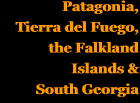 |
|||||||||||||
 |
|||||||||||||
 |
|||||||||||||
Main pages
Railcars •
Esquel route construction photos •
Com. Rivadavia to Punta Piedras •
More photos at Com. Rivadavia •
Appendices
9 Track layout photos at Ing. Jacobacci •
Chapter 7
The 1922 75cm gauge empire


Internal combustion engined stock
Whilst main-line diesel locomotives did not run on the Patagonian 75cm gauge until the import of ex-Bulgarian State Railways machines by the newly privatised Río Turbio coal railway in the mid-1990s, there were early attempts by the FCE to use petrol engined railcars and a small yard tractor. These are examined below. There was also an early O&K diesel shunter purchased for use on the Comodoro Rivadavia port works, and this is covered in the appropriate page.
Railcars
A number of 'coches motor' were constructed by Puerto Madryn workshops for use on the 75cm gauge. There is evidence that examples ran on the FCCC, the Comodoro Rivadavia to Punta Piedras line and the RFIRT, but not on the Rio Negro or Esquel routes.
At least one early petrol-engined railcar was used on the FCCC line. Sylvester Damus reports that it and its trailer were built at Puerto Madryn in 1933. They were two-axled vehicles weighing 2200 and 1800 kg. respectively. The motor car had eight first class seats whilst the trailer had twelve seats.
There were also later railcars, larger 37 (or 45?) seat bogie vehicles built in Puerto Madryn shops in the early 1950s. The car on the FCCC was numbered 65, with a similar one designed for refrigerated fruit and meat-carrying numbered 53. On the Comodoro Rivadavia to Rada Tilly route, one of three cars on the line, numbered 52, was involved in a very serious accident in 1953. Also, at least one of these cars was delivered to the RFIRT at Rio Gallegos. There seem to have been two distinct styles, a very angular pattern and a more rounded one.
A number of photos are displayed below, but it should be noted that there is still a lot to learn about these railcars. It has been suggested that they were constructed on Fanillereux coach chassis, but as yet we do not even know how many were built.
Autovia 2, labelled as AV2, and clearly during the FFCC Patagonico era between 1948 and 1956. The photos here give the impression of a short vehicle which might have run on two axles. This is discussed in more detail further down the page.
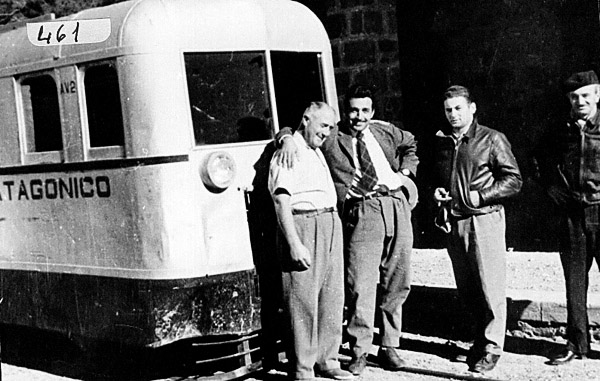
A view of the driving cab, almost certainly of AV2.
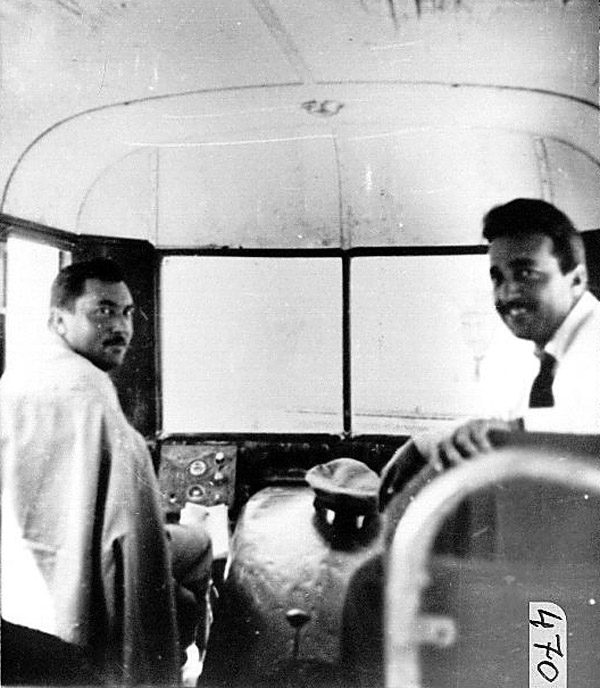
Another picture of AV2, or of an identical vehicle.
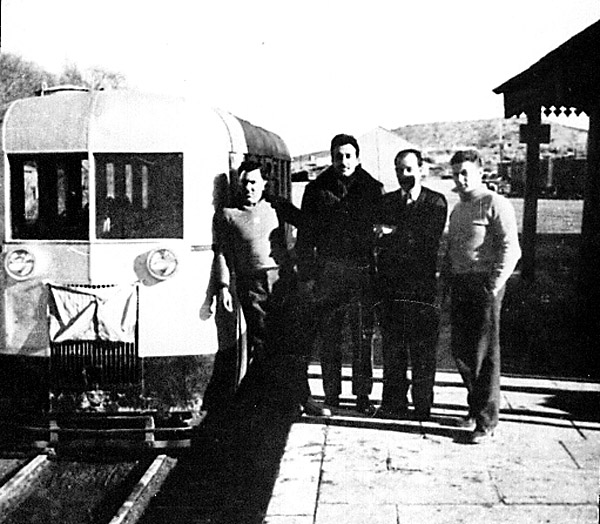
A rear view of the same style of vehicle.
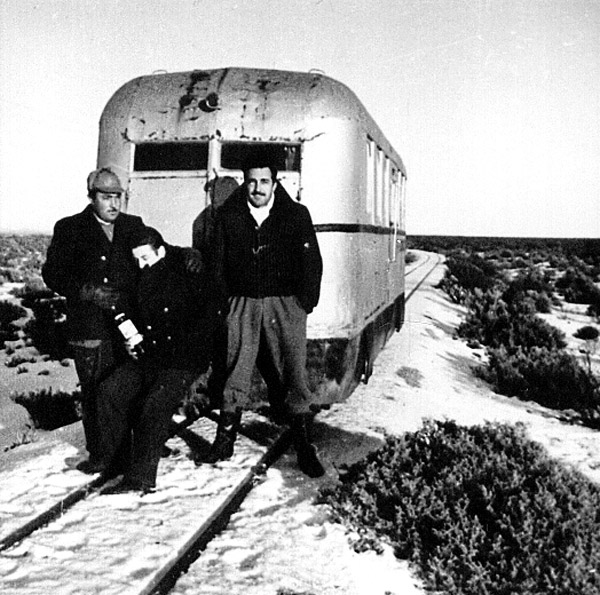
A side on view of car AV2, probably taken on the same occasion. Whilst it can be seen that the right-hand-side of the photo is just about at the end of the car, it is less clear whether there is a bogie hidden behind the two men in the right foreground or merely a single axle. However, at the opposite end of the car, if there are only three side windows from the central door to the end as other photos suggest, there must only be a single carrying axle, suggesting that this is indeed a four-wheeled vehicle.
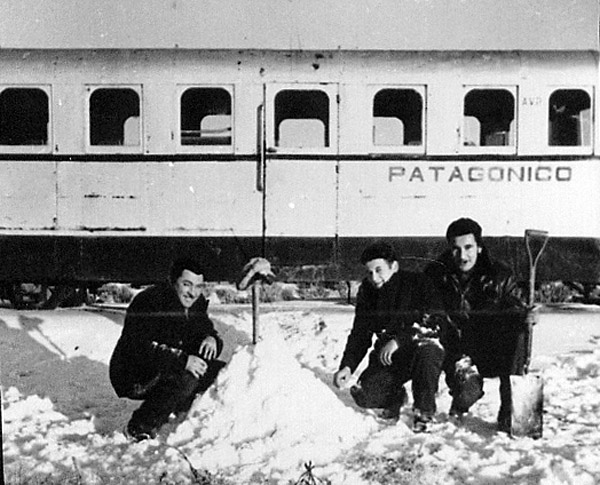
A view of an angular style large railcar at Puerto Madryn workshops.
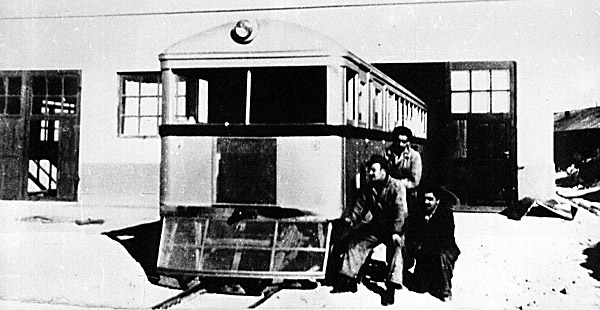
A view of CM65 at Puerto Madryn, with detail differences from the previous photo, eg a solid cow-catcher rather than the mesh style seen above, and a pair of small side-lights. It is believed that CM65 was rescued for preservation after the closure of the railway in 1961, and was taken north to Buenos Aires, but unfortunately fell foul of an arson attack and was lost.
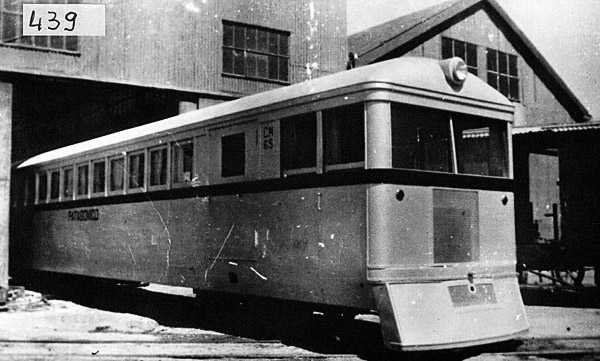
An angular style car coupled to AV2. Date and location unknown.
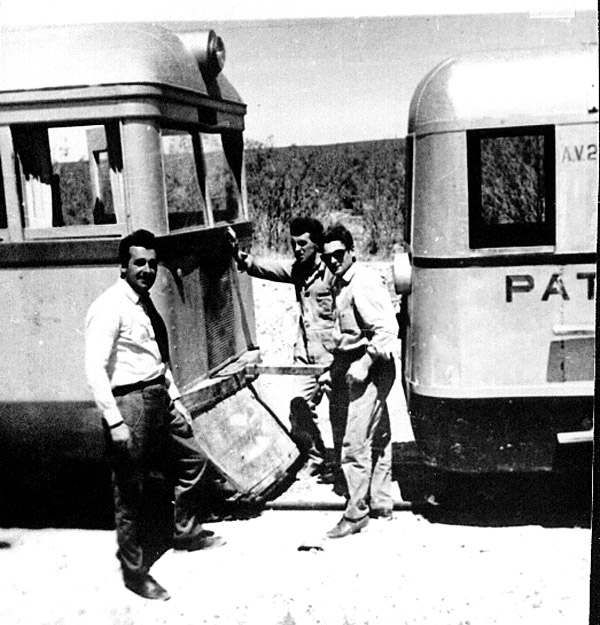
The third style of coche motor, of full length like the angular ones, but with a more rounded style of bodywork. Interestingly, the coach on the left is one of the original FCCC cars supplied by Bolling & Lowe in 1888, together with an early four-wheeled van. These were by then in static use as station buildings at Playa Unión.
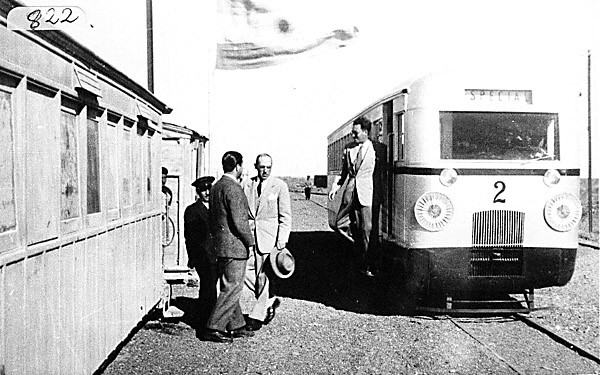
Another photo taken on the same occasion. From this angle the suggestion that these cars were reconstructed from Familleureux passenger stock becomes very plausible as the window pattern and style could easily be from a 1922-built second class carriage. Those coaches had 15 windows along the non-stove side, plus of course a balcony at each end. This vehicle has a total of 18 windows, including the door. Even the blind panel bearing the running number is in the same place as it would have been on the Famillereux coaches.
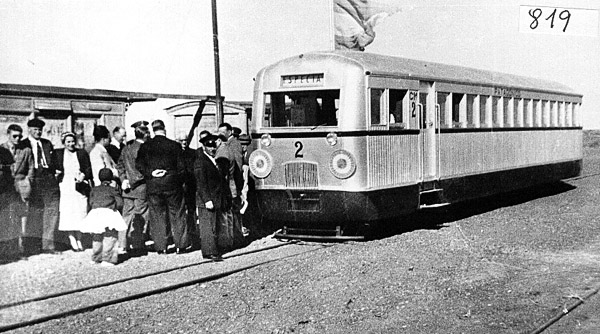
The following photo from the Archivo General de la Nación in Buenos Aires shows the same railcar, possibly at Puerto Madryn workshops.
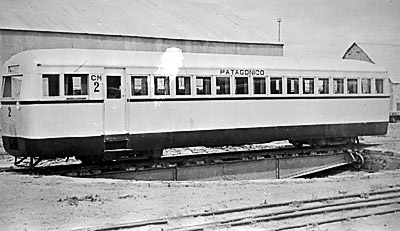
The interior of one of the single windscreen cars, probably CM2 ().
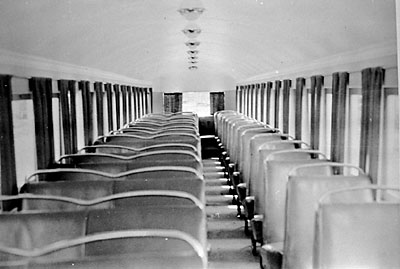
A particularly interesting photo: this was taken at Comodoro Rivadavia port, and shows two coche motores being unloaded from a ship, one in the air of the angular style, and another on the ground with the more rounded styling. These cars, and possibly a third one, must have arrived on the Rada Tilly / Punta Piedras line only a few months before the disastrous accident of February 1953 which involved CM52 overturning when returning from the southern terminus, resulting in twenty-eight fatalities. This car was one of those with the rounded corners and single indscreen, possibly the one seen already on the track in this view.
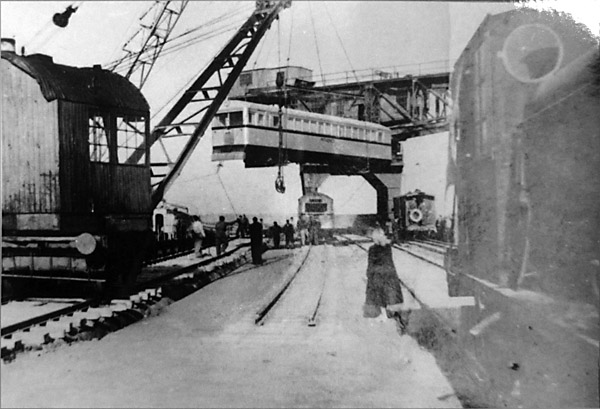
Petrol tractor
A strange and very small four-coupled tractor was used at Puerto Madryn, and still survives at El Maiten. It appears to have been constructed around the innards of a farm tractor. Little is known about the origins and operation of this, but it must have been restricted to use within a works or station yard.
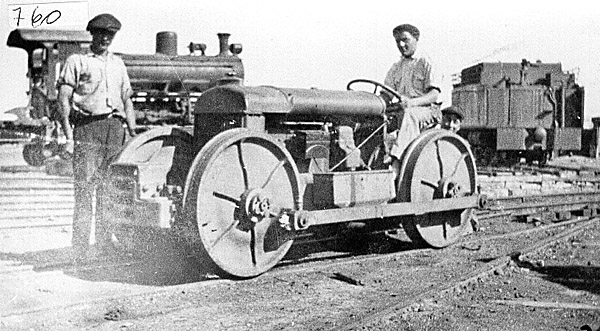
References
1 Photo of railcar kindly provided by Jorge Garreta Mendoza.
26-11-11